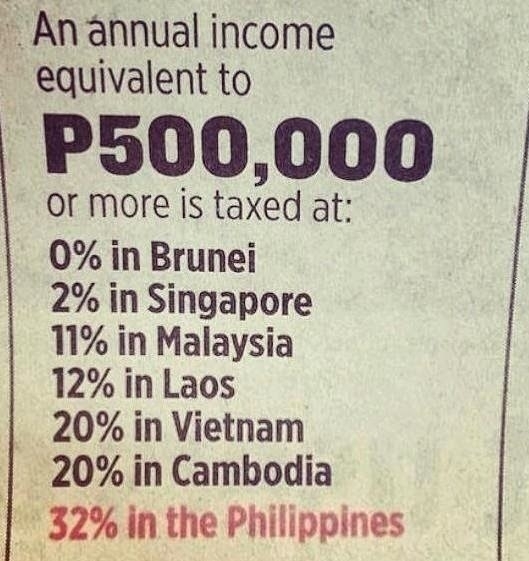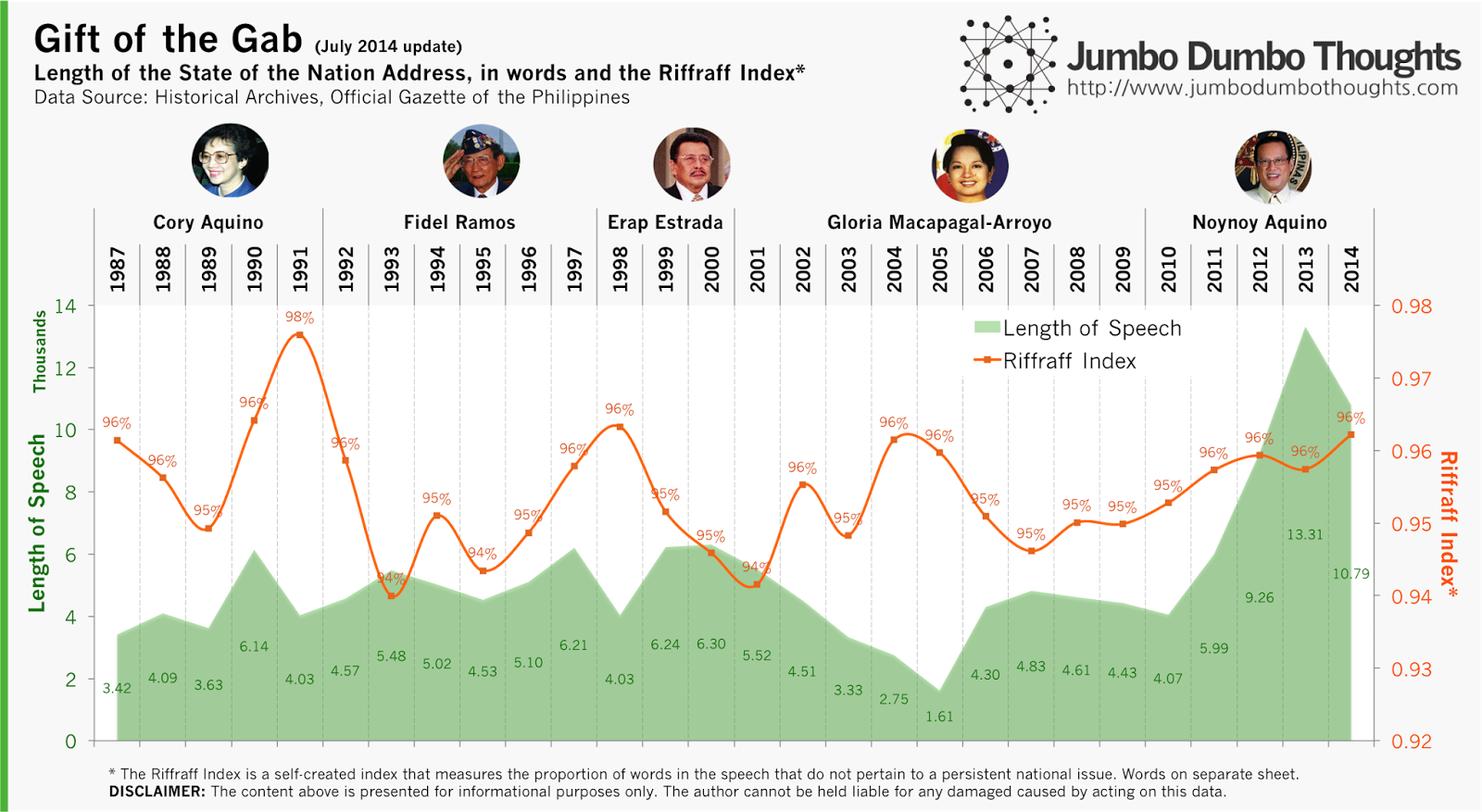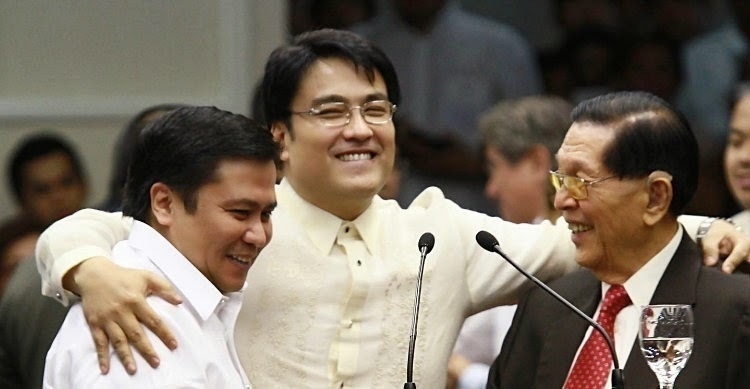Politics
On the Elections: Election Fingerprints

In this elections series, we’ll explore various aspects of the 2016 Philippine National Elections, from fraud detection to the differences in how our country votes. In this first instalment, we learn about election fingerprints and how they may be used to detect fraud in the form of ballot stuffing or vote padding.
On Imperial Manila, Modernization Failure, and Comparative Advantage: A close look at regional accounts
With traffic jams and port congestion an all-too-common sight in the Philippine capital, there is growing sentiment that development should be moved away from the metropolis and into other regions. What does the data, particularly regional accounts from the Philippine Statistics Authority, have to say?

(Photo: Storm Crypt/Flickr, CC BY-SA 2.0)
On the Effectiveness of Higher Sin Taxes (2014 Q2 Update): Losing Steam?
We update our assessment on the effectiveness of sin taxes with fresh national accounts data for the second quarter of 2014, and learn that sin taxes may be losing steam - smokers and drinkers may be having a hard time kicking the habit.

How are higher sin taxes faring a year and a half after their implementation? (Photo: Fried Dough/Flickr, CC BY 2.0, cropped)
When we first covered the new sin taxes in 2013, we focused on its effect on household consumption of alcohol and cigarettes, and subsequently updated it to reflect the 2013Q3 stats. Now that sin taxes have been in effect for roughly a year and a half and has even kicked it up a notch, let’s review national accounts data from the Philippine Statistics Authority (then NSCB), to see how it has fared.
On Taxes: Do Filipinos really pay the highest taxes among ASEAN countries

LABORIOUS LEVIES - This ad in a newspaper cites the claim of the Tax Management Association of the Philippines, taken from the Instagram account of Senator Sonny Angara, one of the main advocates for reducing income tax rates.
The Tax Management Association of the Philippines (TMAP) claims that Filipinos pay the highest tax rates among countries in the Association of Southeast Asian Nations (ASEAN). This is their basis for arguing in favor of lower income taxes and inflation-sensitive tax brackets.. While the debate on whether lower taxes can be an overall sound policy rages on, let’s focus on this particular claim and determine whether Filipinos really do pay the highest taxes in the region.
On Presidential Priorities (July 2014): Aquino moves toward legacy

Aquino’s 5th SONA word counts suggest a shift of focus from current national issues toward long-term legacies such as education, budget management, and poverty alleviation. However, the overall message echoed by the administration remains the same. (Photo: Official Gazette, public domain)
I previously wrote a post that tries to get a feel of the priorities of each administration at various points in time, by measuring how many times each speech mentions certain words that relate to national issues. Following the recent 2014 SONA of President Aquino, we update the data to see what’s changed, and whether there are any shifts in the priorities of his administration.
Please feel free to read the [[On Presidents and Priorities|original post]] to view how this data was collected, shaped, and presented.
The Basics: Length of speech and the Riffraff index
Let’s take a look at the overall length, and how much of the speech actually contained meaningful content, as measured by the Riffraff Index.

President Aquino’s 5th SONA is shorter than last year’s, but still quite long at around ten thousand words, making it the second longest SONA since his mother’s time. Despite this cutting down of length, the amount of riffraff increased, probably due to his lengthy discussion of various calamities and also the legacy statement near the end of the speech.
Presidential Priorities 2014: Education, government finance, and poverty
Let’s use the same criteria to determine the trends in the priorities of various administrations. Will it have changed for President Aquino? Let’s find out:

The President focused more on education (TESDA), poverty (poverty rate and conditional cash transfers), and government finance (debt management, investment rating upgrade) compared to previous speeches. There was less focus on environment and law and order compared to previous speeches. As the term ends, the administration might be focusing more on long-term legacies such as education and balancing government books rather than current issues such as corruption, law and order, economy, and employment.
Priority Heatmap: No change in overall priorities
How does the new data affect the overall priorities of the Aquino administration? The answer is: not much.

Overall, compared to other administrations, the Aquino administration is still very much focused on both graft, corruption, justice and workers, jobs, wages, with a slight shift towards education.
Interactive Word Counter
You don’t have to take my word for it; the word count data is available for you to explore and draw insights from. Just input the words you’d like to count in the five white boxes (use space to clear out a cell), and see it reflected in the graph.
Unfortunately, this link has expired and I don’t have time to recover it.
Hope you enjoy discovering new trends with the tool! If you find an interesting pattern, please don’t hesitate to share it in the comments!
Thanks for reading! If you enjoyed reading, I’d appreciate it if you shared this with your friends or comment below. Data and computation inquiries can be made through the contact form or the comments.
aliases: - 2014/08/sona-words-july-2014.html - content/blog/2014-08-13-sona-words-july-2014/sona-words-july-2014.html - posts/2014-08-13-sona-words-july-2014 - articles/sona-words-july-2014
On Pork and Plunder: The numbers behind the Priority Development Assistance Fund (PDAF) scam

For the first time in Philippine history, three Senators have been arrested without bail on charges of plunder. In this photo are the three Senators in question after Sen. Revilla delivered his privilege speech last June 2014.(Photo: Alex Nuevaespaña/Senate PRIB)
On charges of plunder related to the PDAF or pork barrel scam, three senators - Enrile, Estrada, and Revilla - were arrested in separate occasions during the past week, joining the alleged pork barrel mastermind Janet Lim-Napoles in incarceration. The trial will surely play out in a methodical, if not slow, pace, and many Filipinos will be in want of the case’s speedy resolution. What we can do right now, is to take PDAF releases data from the Department of Budget and Management and use it to take a look at the numbers behind the PDAF scam - how much did they release, to whom, and for what? These are questions we can answer with the data.
On Fraud and Fake Ballots: Detecting election fraud through data

BALLOT BOXES - Data can be used to safeguard ballot integrity, especially in a time of electronic transmission and canvassing of voting information. In this photo, ballot boxes are prepared for use in the 2007 Davao barangay elections. (Photo: Keith Bacongco/Flickr, CC BY 2.0)
Election fraud in the Philippines is almost always alleged, but never really proven. We can explore an approach that can identify voting data patterns those most likely to be associated with vote padding - adding fake ballots - and find out how the sanctity of the ballot can be preserved by the thoughtful use of election data.